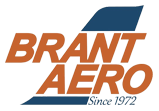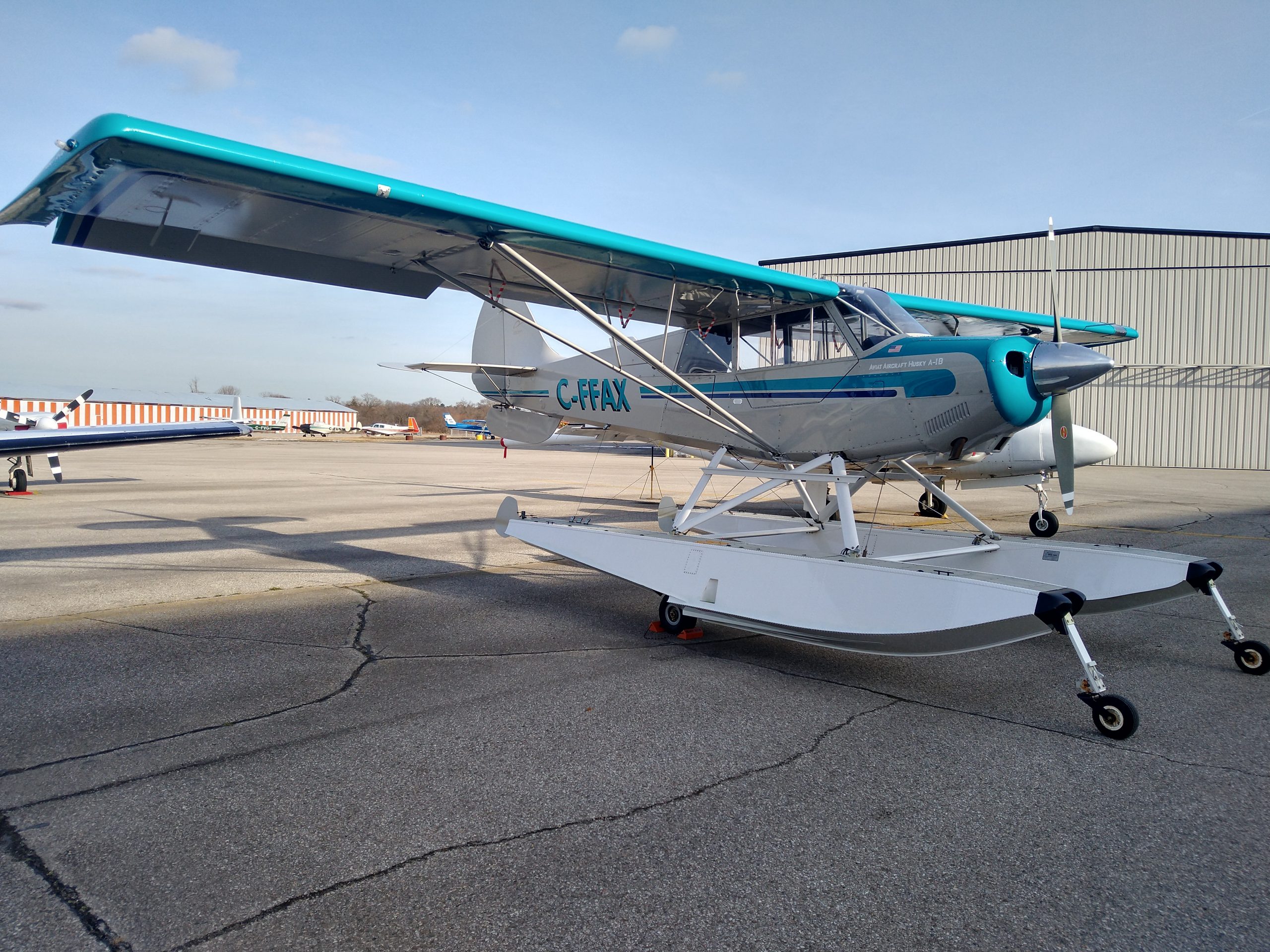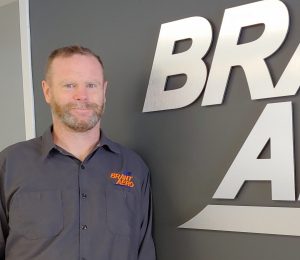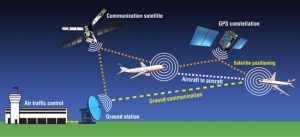Shipping an Aircraft… Yes we do that too!
The Mission:
Recently, Brant Aero was contacted by representatives of a flying club in northern Sweden who were the proud new owners of an Aviat A-1B Husky amphibian. The recently purchased aircraft located in Ontario, Canada had to travel 6,115km (3,800 miles) to its intended new home airfield on the edge of the Arctic Circle.
It is common for light general aviation aircraft to be specially equipped with additional fuel tanks and equipment for special one-off trips across the Atlantic; with that being said, the Husky wasn’t an appropriate aircraft for such a journey due to a combination of its slow speed, VFR (Visual Flight Rules) cockpit and lightweight fabric construction, resulting in such a journey being both daunting and dangerous.
To reduce the costs and risks of ferry flying, the new owners elected to ship their aircraft using intermodal methods, this meant that the airplane had to be packed into a standard 40’ (12.2m) shipping container.
Planning:
The planning stage for the containerization was full of small challenges that had to be overcome. The stand out issue being that the aircraft couldn’t fit into the container both laterally and vertically due to the height of the aircraft on floats in addition to its wingspan.
As the aircraft was based remotely from Brant Aero’s home base in Brantford, dimensional planning had to be done with the support of both Aviat Aircraft and Wipaire floats. During this process it was determined that the wings, floats, ventral stabilizer, rudder and horizontal stabilizer had to be removed to fit securely in the container.
A scaled visual packing plan was created to verify the fit of all the components to 1” (2.55cm) accuracy, this was essential to create as wood jigs had to be designed to fit the multiple components while still confirming proper fitment.
Disassembly:
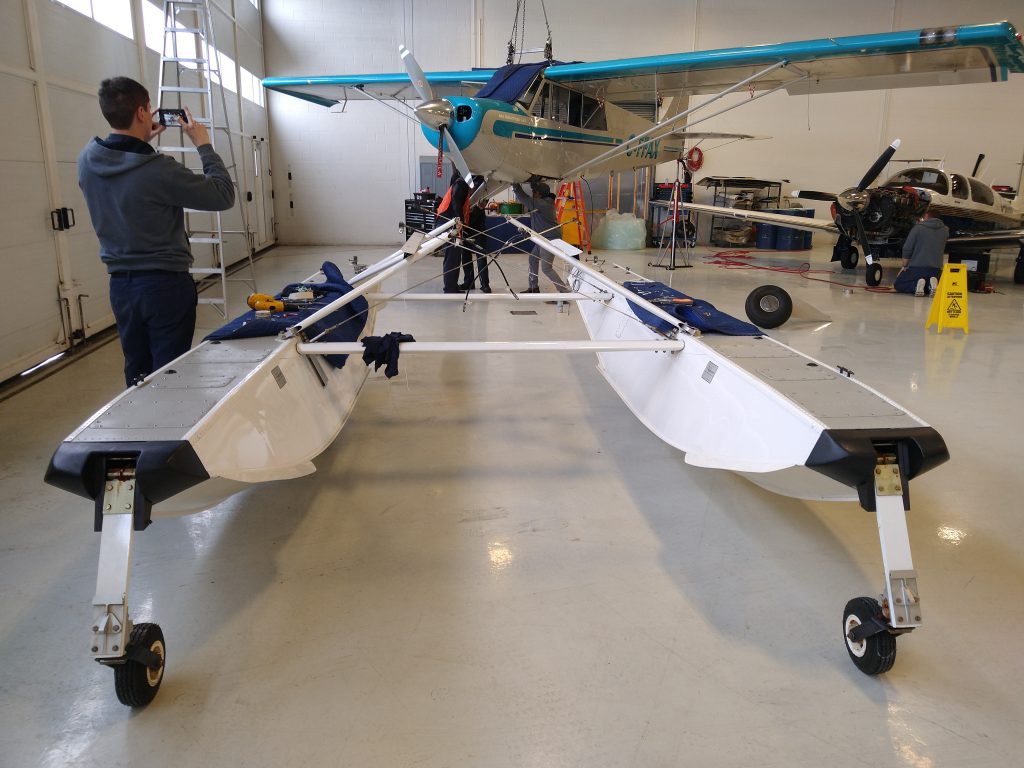
Upon the arrival of the floatplane to our hangar, a through arrival inspection was performed. Documentation of all snags on the aircraft, both mechanical and cosmetic was undertaken.
From there the next order of business was to remove the amphibious floats and install the factory “taildragger” style landing gear. This is usually a fairly straightforward process that requires lifting the aircraft using the lift points situated on the top cabin, removing the pontoons and associated rigging, installing the wheels and finally setting the aircraft back on to terra firma.
All previous float swaps performed in house required our 4 point lifting jig, the Husky was the first aircraft that we had to convert to wheels that required a two point lift bar. A custom, heavy duty solution was designed that had the capability of not only being able to lift the Aviat, but also other heavier aircraft that might only have a dual lift point setup. A quick turnaround from design to finished product was made possible by friends of the company and next-door neighbour Custom Stainless Works.

The simple, rugged design of the A1-B facilitated the disassembly of the aircraft, however special care had to be taken as the aircraft is covered by a fabric known as Dacron. As opposed to the more commonly seen semi-monocoque design with aluminum skin, the fabric covering of the Husky required special handling eliminate the chance of skin punctures.
Removal of the wings was a relatively straightforward process that required special attention to ensure the rigging was secured in a safe, convenient and logical manner. The remaining components all had similar care taken due to control surface rigging, however were generally simpler to remove due to their reduced amount of rigging.
Little prep was required for the cabin of the aircraft, aside from protecting the pitot-static system, the ELT (Emergency Locater Transmitter) was deregistered and physically disconnected from its power supply to eliminate the chance for it to accidentally broadcast during the movement of the container.
Packing
The slated delivery time for the aircraft is 60 days, during that time the shipment would be witness to movement between trucks, trains and a winter North Atlantic ocean crossing. To accommodate for this extremely sturdy packing was developed that eliminated the movement of the fuselage and associated components along all axes.
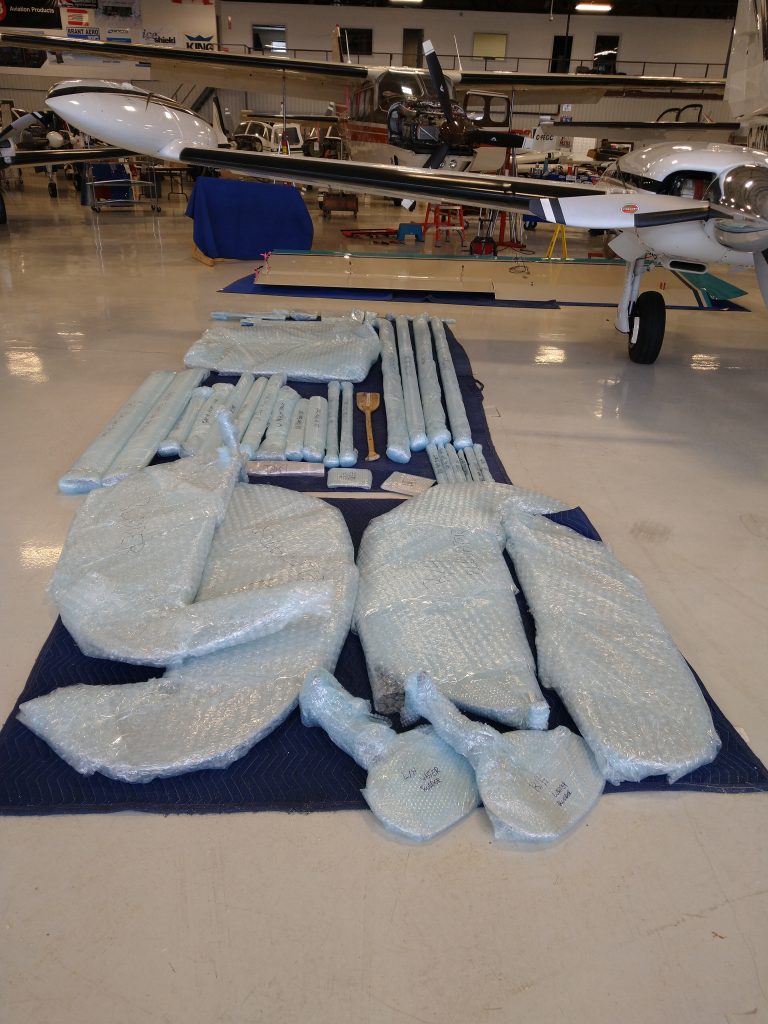
Wood selection had to be carefully considered as only ISPM-15 certified lumber is accepted for international shipments. ISPM-15 certification is an internationally recognized treatment of wood to avoid the spread of organisms that can harm the local ecosystem at the delivery location. There are multiple facets to what constitutes this wood certification, however nearly all ISPM wood is kiln dried to a 56 C (130 F) internal temperature to neutralize any of the aforementioned risks.
Due to the fabric covering, care had to be taken towards the bracing support locations, in addition a soft but dense padding was used along the contact points between the aircraft components and jigs to avoid marring any surfaces while on route. Sub assemblies were appropriately wrapped and labeled; these were then placed into three custom made crates designed to fit securely with the rest of the packing plan.
Once everything was packed in the container, the various jig assemblies were secured to the floor and one another to make a very stiff and secure singular structure within the container. For additional redundancy, numerous straps were used as a back up method of securing the cargo in the advent of drastic load shift.
Fin
From start to finish the containerization of the Aviat Husky was a smooth process. Thanks to Brant Aero’s 48 years in business and an experienced team there were no surprises – resulting in a project that was both on time and on budget.
Do you want to ship an aircraft from North America abroad? Reach out to Brant Aero today for a customized headache free shipping solution that will get your aircraft where it needs to go!

Author Profile: Sam Roxon joined the Brant Aero team in November 2019. One of our newest members, he is the Sales and Quality Associate. His background is in the charter industry, aviation logistics and has his private pilot’s licence.

